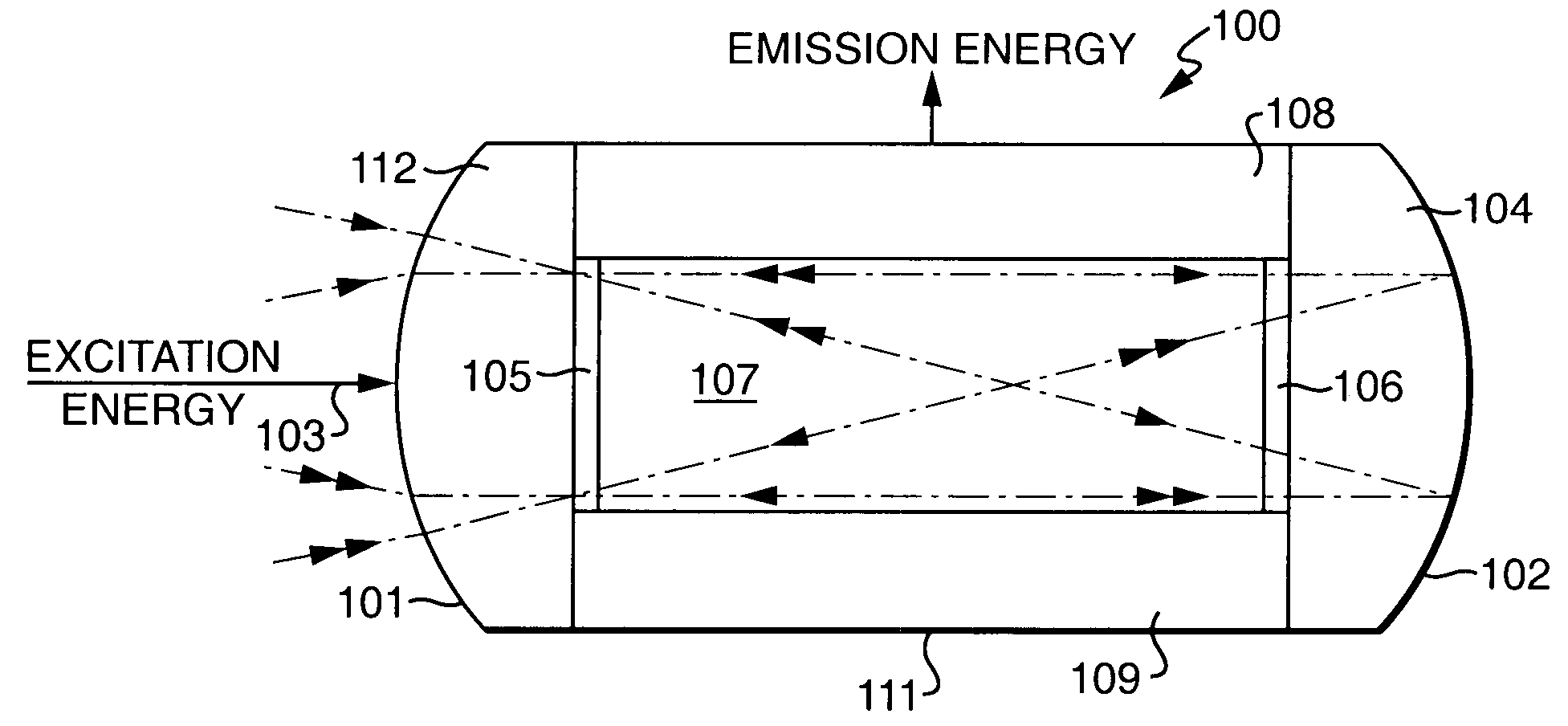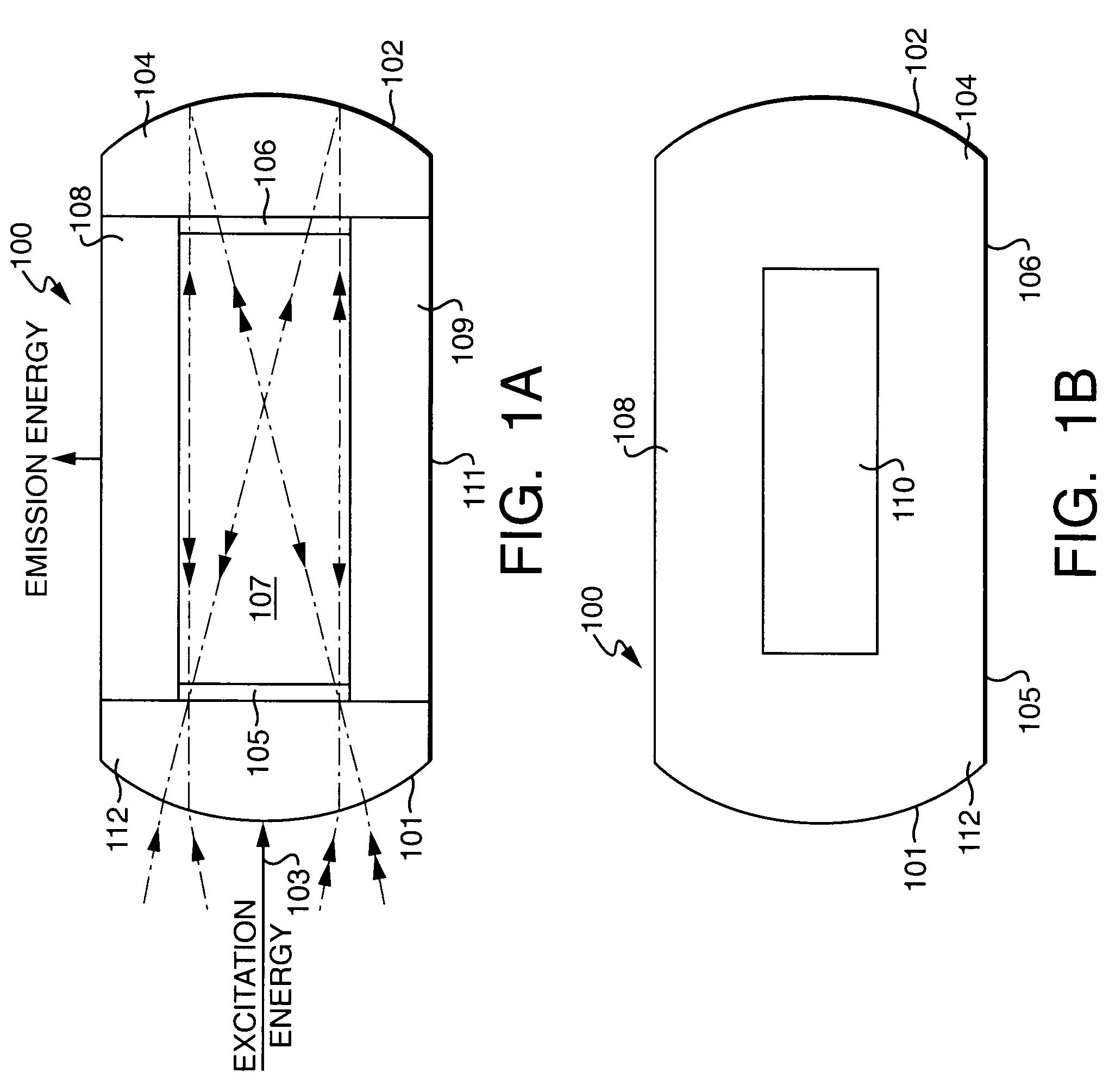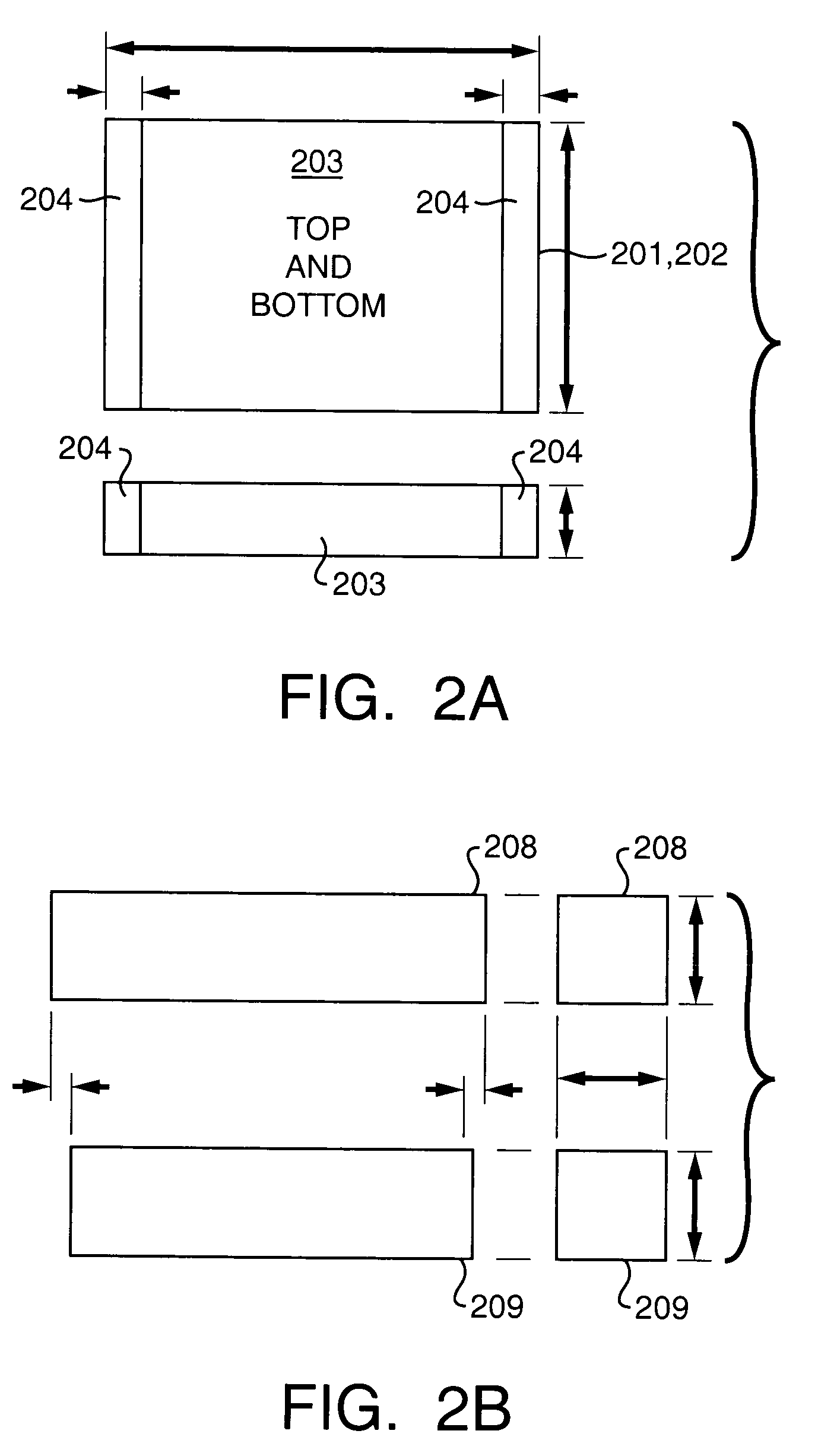Fluorescence detector geometry
a detector geometry and fluorescence technology, applied in the field of fluorescence detectors, can solve the problems of reducing the size of the sample, short cell pathway, and comparatively low output signal magnitude, and achieve the effects of increasing the path-length of the excitation beam, increasing the detection sensitivity, and increasing light absorption
- Summary
- Abstract
- Description
- Claims
- Application Information
AI Technical Summary
Benefits of technology
Problems solved by technology
Method used
Image
Examples
Embodiment Construction
[0023]The flow cell according to the invention is used for analyzing small sample volumes typically between 0.5 to 15 μL. Generally, the analysis of these small sample volumes is accomplished with the use of an axially excited flow cell having a retro-reflective mirror that allows for an increased pathlength through the sample. The use of this inventive flow cell with excitation optics and emission optics on different planes allows for a significantly greater pathlength through a sample of interest and therefore greater sensitivity in the detector results.
[0024]Referring to FIGS. 1A and 1B, the flow cell 100 according to the invention is constructed from a combination of black quartz and clear non-fluorescence quartz. The clear quartz is UV grade having a low fluorescence, such as Suprasil or an equivalent clear quartz known to those skilled in the art. The flow cell 100 has a proximal end 101 and a distal end 102. The proximal end 101 contains an excitation lens 112 that allows an ...
PUM
| Property | Measurement | Unit |
|---|---|---|
| volume | aaaaa | aaaaa |
| volume | aaaaa | aaaaa |
| volume | aaaaa | aaaaa |
Abstract
Description
Claims
Application Information
 Login to View More
Login to View More - R&D
- Intellectual Property
- Life Sciences
- Materials
- Tech Scout
- Unparalleled Data Quality
- Higher Quality Content
- 60% Fewer Hallucinations
Browse by: Latest US Patents, China's latest patents, Technical Efficacy Thesaurus, Application Domain, Technology Topic, Popular Technical Reports.
© 2025 PatSnap. All rights reserved.Legal|Privacy policy|Modern Slavery Act Transparency Statement|Sitemap|About US| Contact US: help@patsnap.com



